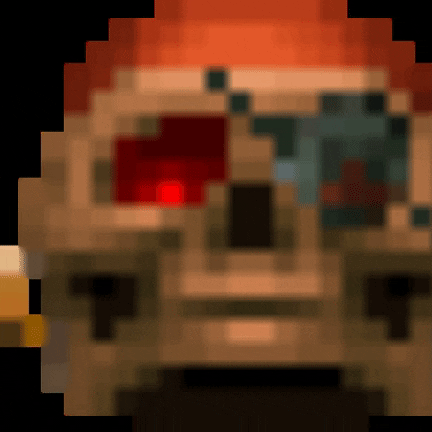-
Posts
800 -
Joined
-
Last visited
Single Status Update
-
Stephen Hawking is my hero. Just look at him. How can you not love him?
*noogys his limp head* awwwww i love ya big guy.
*questions what the point of this thread is*
umm ok.... who do you people love and admire?- Show previous comments 32 more
-
 Dr. Zin said:
Dr. Zin said:Eye witness accounts are notoriously unreliable. I forget the exact words, but a prosecutor once said that the ideal case would be based solely on physical evidence, with no witness testimony. When you see something out of the ordinary your mind goes into overdrive and tries to figure out what it is, and it often makes wrong guesses. This is really well documented by people in the hunting industry, mainly because it is one of the causes of hunting accidents. Joe Blow is in his treestand sees something brown walking through some bushes. Since he can't really make up what it is he automatically assumes it is a deer. He shoots at it and finds he just killed his hunting partner! Thats one of the reasons flourescent orange is required in most states. A suspiciously large number of cryptid sightings occur in poor viewing conditions, likely because of this fact.
Yes, I agree with the fact that eyewitness accounts alone are unreliable. There are many incidents of people seeing bubbles in a lake or bears wandering through a thicket and they go "OMG Ogopogo!" or "OMG Bigfoot!". There are also quite a few accounts of people seeing sasquatches or thylacaines or orang pendeks or whatever in plain sight though. I'm not saying these aren't from bored attention seekers but not all reported sightings are that vague. Also, while there are many cryptids such as the Loch Ness Monster in which there is no evidence for support besides extremely vague or blurry photos and a few strange accounts by bored locals looking to get more tourists into town (funny that the most detailed Nessie sightings seem to be by hotel owners), there are others, such as sasquatches where they also have not only eyewitness accounts, but also rather clear photo and video evidecne, plus casts, possibe nests, and mystery hair samples.
This fact isn't helped by the fact that virtually everyone in cryptozoology is an amature. The people analyzing these accounts often have no real biological or even basic scientific training. For example, there was a series of recordings floating around the internet that were supposedly sasquatch vocalizations. The text provided with them even proclaimed that they had been acoustically analyzed and didn't match any know animals. Low and behold, some people who actuall had had experience with animal calls said they were all relativly common sound from animals like raccoons.
True, but there are a few cryptozoologists with biology degrees and they are considered the foremost experts in the field. The reason there are so few though is probably because there aren't very many great opportunities to get any kind of respect if you enter the field since 90% of the world considers it a joke. I suppose the whole thing is an vicious cycle. However, there have actualy been some rather prominent people from other fields who do suport it. For instance, Jane Godall once said that it's possible the sasquatch exists and she believes in it's existance. There have alos been non-scientsits such as Teddy Roosevelt who have believes in bigfoot.
Many cryptids supposedly have old sightings that help confirm the validity of the claims. Often these are completly false, or at least extremely distorted. A famous example is the Jacko case, a series of newspaper articles describing how in the late 1800's a train crew captured a young sasquatch. Through out the years this story has appeared in countless books. When historians started digging into it they realized that it was really a publicity stunt of a small town newspaper trying to upstage its competitor. This was confirmed by the fact that neighboring towns papers made no mention of any "Jacko".
Heh, I never heard of that incident. But it should be noted that while there are a lot of folk tales that are complete crap, a few turn out to actualy be accounts of real animals that are subsequently documented by western science. A few examples are:
- The Okapi, which natives knew about for years but white explorers discounted as being too silly until they actualy foudn one.
- The Coelecanth, which native fishermen in Africa and Asia had been catching for years but western science had thought they had gone extinct with the dinosaurs.
- The Platypus, which was captured and killed by one explorer and brought back to England. All the biologists there said it was an obvious hoax and stuck with that until someone actualy got a live specimen.
- The Mountain Gorilla was considered a folk tale of local African tribes until a European expidition actualy stumbled across a troop of them.
- A gilled antelope was thought to be a myth among natives in an area in southeast asia until one was actualy found (along with another species of antelope or deer) about 6 years ago.
In a similar thread, alot of the stuff is just plain crap. The most obvious are outright fabrications, but often folklore is transformed into a beast. The best example of this is the Chucacabra (sp?), an old Puerto Rican legend. There are accounts of animals "sucked completely dry of blood" (evidently some people don't realize that blood in a several day old carcass has congealed) and photos of Chucacabra's "shot by farmers" (these are almost always feral dogs or coyotes that have died in an arid area and have dessicated before the could really rot, leaving behind a fierce looking monstrosity).
I agree. Stuff like the Chupacabra, the Mothman, the Jersey Devil, and that florida lizardman are a bunch of crap that are most likely cases of mass hysteria. But one thing a good crytozoologist should do is try to weed out the crap cases from stuff that could actualy be real.
The latest scourge of CZ is image manipulation. Again, there are people making outright forgeries, but there are also good intentioned people that accidentally distort an image and create something that wasn't there.
Yeah, it seems like about 90% of all ghost, UFO, or "rod" pictures are smudges on the camera or film or errant insects.
I was really into cryptozoology for a while, and there are definitely some aspects that bear more research (like thylacines still surviving in remote parts of Tasmania), but an unfortunatly large porportion of the material is utter garbage.
Yeah, I don't believe 90% of all crytozoology cases. You have to keep an open mind, but you also have to be rational at the same time.
On the subject of the thylacine, there have been two rather similar cases in the news recently. One is the re-discovery of the Ivory-Billed Woodpecker which was thought to have been extinct for years. They thought the last one had died in the 50s or so but there had been sightings every few years ever since then so every once in a while someone would send out an expidition to look for them. Finaly, it looks like they've located at least one.
Secondly, there is the Bondo Mystery Ape in the Congo which has been known by natives since forever, but excepting a German expidition in the 30s which discovered a couple odd skulls, there hasn't been any interest in it up until recently. This recent expedition was able to come up with some photographs which seem to confirm it's really out there. This new ape looks like a cross between a gorilla and a chimpanzee. Wether it's a new species entirely or a hybrid gorilla/chimpanzee is unknown, but hopefully they'll find out.
Oh, and I think the social and psychological sciences aren't as widely accepted is because they often rely on personal interpretation and philosophy in their use. Also, alot of the people who created many of the basic theories of these fields had strange personal beliefs that they freely mixed with their science.
I rather disagree with you (except maybe with psychology which I have a personal grudge against), but I have things to do right now that I have to get working on so can't really explain my stance.
- The Okapi, which natives knew about for years but white explorers discounted as being too silly until they actualy foudn one.
-
 Foofoo said:
Foofoo said:If you find evidence that cant be explained you think "ahhh well its probably just so and so" and then ignore it :S fucken hell man. that isnt science either.
Um, what evidence? What evidence for ghosts has there been that hasn't or can't be explained? Christ dude, people make a living trying to find conclusive proof and haven't found any.
-

I think we agree on more than we disagree danarchy. I guess I'll list these by points since I doubt anyone wants to read 5 pages of imbedded quotes.
1. I think we agree for the most part here. All I have to add is that actual physical evidence is a molehill compared to the mountain of eyewitness reports on most cryptids. Of course sometimes the physical evidence is suspect too.
2. Maybe I forgot to say that although there are people who are qualified working in cryptozoology they tend to be few and far between. Part of the reason for this is that qualified people tend to get burnt out by all of the hoaxers, grandstanders and know-it-alls they have to deal with in cryptozoology.
3. I agree that locals often have knowledge of unknown species. The point I'm really trying to make is that entire cases for cryptids are often built off of old stories and "sightings", which are often just local fokelore.
4. Total agreement here. Cryptozoology has become infested with this kind of garbage.
5. Again we agree.
6. Its sad that cases like the Ivory-Billed Woodpecker, thylacine, and Bondo-Ape get lumped together with mothman. There needs to be a split in cryptozoology between creatures with real evidence and fantasy land.
On sociology and the like,
I think that they are very important sciences, it's just that sometimes bad science was applied by the people who were supposed to be progressing the field, and this has hurt them in other scientific field's view.
















